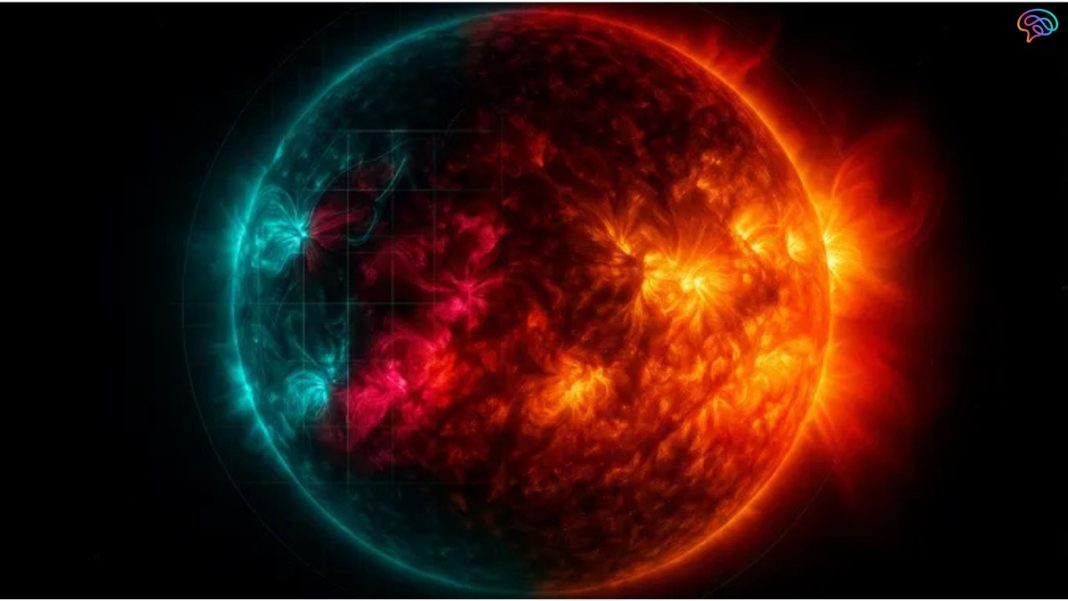NASA’s Surya AI has emerged as a groundbreaking innovation in heliophysics and artificial intelligence, marking a new era in space weather prediction. The model, developed in collaboration with IBM, was trained on nine years of Solar Dynamics Observatory (SDO) data and is capable of forecasting solar flares and eruptions with remarkable precision. These solar phenomena pose significant risks to modern life on Earth, from disrupting satellites and GPS systems to threatening aviation safety and power grids. By releasing Surya as an open-source model, NASA is promoting global cooperation to strengthen preparedness against these natural hazards.
About Space Weather and Its Impact
Space weather refers to conditions on the Sun that influence the solar wind and impact Earth’s magnetosphere, ionosphere, and thermosphere. Solar flares and coronal mass ejections (CMEs) are among the most dangerous events. They unleash streams of charged particles and magnetic energy across the solar system.
When these disturbances collide with Earth, they can:
- Knock out satellites critical for communications and navigation.
- Trigger blackouts by destabilising power grids.
- Force airlines to reroute flights in polar regions.
- Threaten the safety of astronauts aboard the ISS or future lunar missions.
Accurate and timely forecasting of solar activity has long been a scientific challenge. With NASA’s Surya AI, the capability to predict these phenomena has advanced significantly, offering better resilience for societies reliant on technology.
Surya – NASA’s AI Model for Solar Forecasting

Unlike traditional physics-based models, Surya AI leverages deep learning and machine learning techniques to recognise subtle patterns in solar data. By analysing terabytes of imagery and time-series data, Surya can predict eruptions up to two hours in advance. This lead time is crucial, giving satellite operators, energy companies, and governments the chance to implement preventive measures.
What makes Surya unique is its open-source framework. NASA has ensured that the code and datasets are publicly available, allowing scientists across the globe to build upon its foundation. This step encourages collaborative innovation and ensures that countries worldwide can enhance their capacity to withstand space weather disruptions.
Technical Challenges in Modelling the Sun
The Sun is an extraordinarily complex system. Its surface is marked by turbulent plasma flows, magnetic field entanglements, and periodic cycles of activity. Traditional computational models struggled because they had to simplify these interactions.
Surya AI addresses these challenges by incorporating:
- Spectral block layers to analyse energy variations across different solar wavelengths.
- A long-short transformer backbone that combines short-term and long-term solar activity data.
- Frequency-aware and time-series integration to detect both sudden and gradual changes in solar behaviour.
These innovations allow Surya to process massive datasets while retaining accuracy, overcoming long-standing memory and computational barriers.
Scientific Use Cases and Achievements
NASA tested Surya AI on several critical case studies. One notable success was its accurate reproduction of the St. Patrick’s Day geomagnetic storm in 2015, one of the strongest space weather events of the decade. Surya predicted the CME with higher accuracy than existing models.
Key research tasks where Surya excelled include:
- Forecasting the emergence of active regions on the Sun.
- Predicting strong solar flares with up to 16% better accuracy than older models.
- Estimating solar wind speeds up to four days in advance.
- Forecasting extreme ultraviolet spectra, critical for understanding Earth’s upper atmosphere.
These applications demonstrate how Surya bridges the gap between heliophysics and AI, providing practical tools for scientists and industries alike.
Collaborative Development of Surya
The development of NASA’s Surya AI was not an isolated effort. It brought together experts from NASA research centres, leading universities, industry partners like IBM, and global collaborators. Support also came from the National Science Foundation and NVIDIA, which contributed both technical and computational resources.
This multidisciplinary collaboration highlights the importance of combining domain knowledge in space science with cutting-edge AI expertise. The open-source release ensures that Surya can evolve continuously through contributions from a worldwide research community.
Global Significance and Future Prospects
Space weather forecasting is not just a scientific pursuit but a matter of global security and economic stability. With increasing dependence on satellites, aviation networks, and renewable energy grids, societies are more vulnerable than ever to solar storms. NASA’s Surya AI provides a crucial buffer, enabling early warnings that can save billions of dollars and protect lives.
The model also sets the stage for future advances:
- Integration with real-time satellite monitoring for instant alerts.
- Expansion into predicting space weather impacts on lunar and Mars missions.
- Enhancing resilience of 5G networks and undersea internet cables vulnerable to geomagnetic disturbances.
By combining open-source innovation with international collaboration, Surya represents not just a technological milestone but also a vision of shared global responsibility in facing natural cosmic challenges.

Conclusion
NASA’s Surya AI is a pioneering achievement in the intersection of space science and artificial intelligence. By providing earlier and more accurate solar forecasts, it strengthens global resilience against space weather threats. Its open-source nature ensures that this is not just NASA’s tool but humanity’s collective asset. As societies increasingly rely on technology, the ability to anticipate and mitigate solar hazards becomes vital—and Surya stands at the forefront of this mission.




